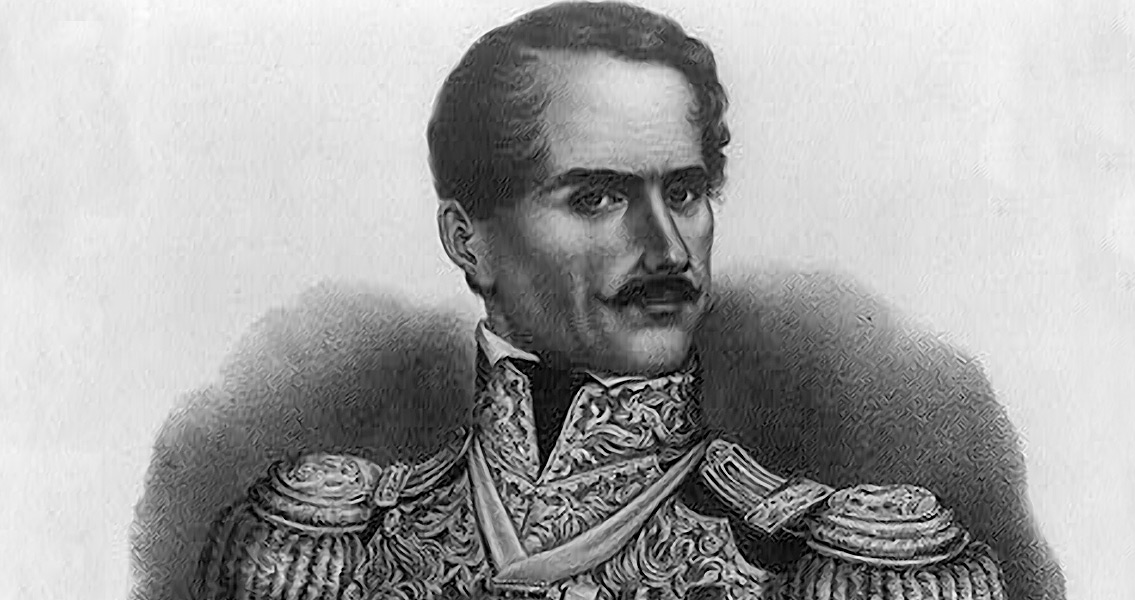<![CDATA[Antonio Lopez de Santa Anna, one of the most fascinating figures in history, died in Mexico City on 22nd June, 1876. A general and then president through some of the most important moments in Mexico's history, Santa Anna's life and political career were remarkable for the frequency with which he switched allegiances and ideological outlook as the country made the transition from Spanish colony to independent nation. Born into a middle class family in Veracruz in 1794, Santa Anna was the son of a minor colonial official. After receiving a formal education and working briefly as a merchant, Santa Anna won a commission in the Spanish military while still a teenager. He served in the infantry, a position he quickly demonstrated an aptitude for. Until 1821 Santa Anna fought against Mexican rebels for the Spanish, winning a series of promotions and awards, and helping Spain maintain its imperial hold over Mexico. For reasons which are unclear, he switched sides and became the military leader of Agustín de Iturbide's rebellion against Spanish rule. By the time Mexico had won its freedom in the War of Independence Santa Anna was a Mexican national hero, and was made a governor. The switch in allegiances from Spanish imperialism to Mexican nationalism was far from the last time Santa Anna changed sides. In 1823 he joined the forces which eventually overthrew Iturbide. In 1828 he backed Vicente Guerrero's successful campaign for president, but then conspired to have him deposed. Santa Anna's position as a Mexican national hero was cemented in 1829 when he once again led armies against the Spanish, this time to prevent an attempt to reconquor Mexico. He became known as the Hero of Tampico, affording him a level of popularity which allowed him to eventually win the Mexican presidency in 1833. As a politician, his tendency to change sides and allegiances became just as apparent as it had been during his time as a military leader. Elected by massive popular majority, Santa Anna's campaign had been based on a commitment to federalism and restricting the influence of the Catholic Church in political matters. Once in power however, he increasingly encouraged a turn towards centralisation, and ultimately declared himself dictator in 1835. In 1836, Texas, a state of Mexico with a large Euro-American population with greater loyalty towards the USA, used Santa Anna's disregard for the Mexican Republic as justification to declare independence. Santa Anna took personal control of the army sent to invade Texas, but after initial successes at the battles of the Alamo and Goliad the Mexican forces suffered a shock defeat at the battle of San Jacinto. The Mexican army was destroyed and Santa Anna, imprisoned, signed a treaty calling all Mexican forces to withdraw from Texas. While in captivity Santa Anna had been deposed from power, but he eventually returned to Mexico following a brief stay in the United States. In 1841 he led another revolt in Mexico, and siezed power for another four years until being driven into exile in 1845. When the Mexican-American War broke out, the US President James Polk arranged for a ship to transport Santa Anna to Mexico to work for peace. Once back in the country however, Santa Anna took control of the Mexican army fighting against the USA. Mexico's defeat finally saw Santa Anna retire and leave the country. Following Ferdinand Maximilian Joseph's crowning as emperor of Mexico with the backing of the French Emperor Napoleon III, Santa Anna appplied to the United States for support to lead a campaign against Maximillian while also simultaneously offering his services to him. The action, towards the end of his life, provides a clear microcosm of the willingness with which Santa Anna would hedge his bets in the pursuit of power and influence. Impoverished and blind, Santa Anna was allowed to return to Mexico two years before his death. ]]>
Antonio Lopez de Santa Anna Dies
